How to Build a Call Center for Small Businesses on a Budget

Starting a call center can feel overwhelming, especially when you're running a small business on a tight budget. But here's the good news: cost-effective strategies make it possible to build a functional call center without breaking the bank. For example, transitioning to remote work can save up to $11,000 per employee annually and cut call center costs by 27%. Plus, investing in strong onboarding can boost productivity by 70%, directly reducing expenses.
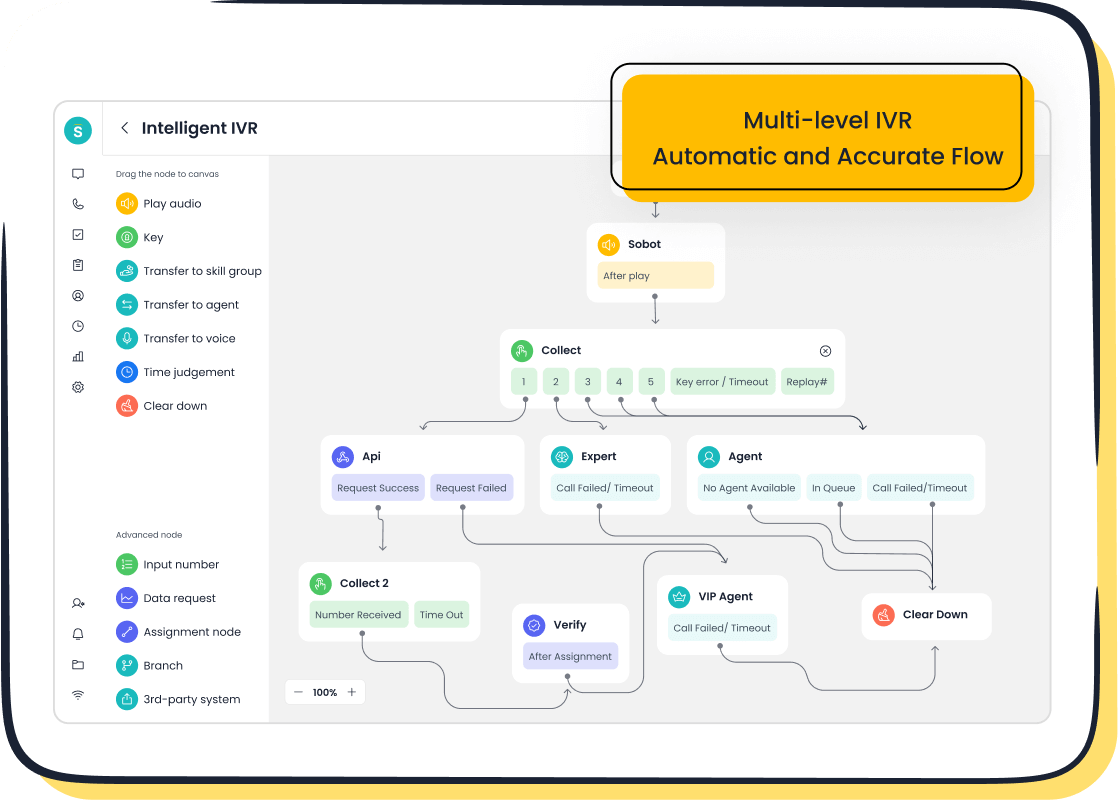
Sobot’s Voice/Call Center offers affordable solutions tailored for small businesses. With features like AI-powered Voicebot and smart call routing, you’ll improve efficiency and customer satisfaction. Imagine achieving a 97% CSAT score or reducing inbound discussions by 20%. Sobot helps you turn these possibilities into reality while keeping costs manageable. It’s not just about saving money—it’s about creating a call centre for small business success.
Planning Your Small Call Center
Define Goals and Objectives for Your Call Center
Before you dive into starting a small call center, take a moment to define your goals. What do you want to achieve? Maybe you’re looking to improve customer satisfaction or reduce response times. Setting clear objectives helps you measure success and stay on track.
Key performance indicators (KPIs) can guide you here. For example:
| KPI | Description |
|---|---|
| Average Speed of Answer | Tracks how quickly agents respond to calls, reflecting service quality. |
| Average Handle Time | Measures the time spent on each call, helping you assess efficiency. |
| Cost Per Call | Shows the average cost of handling a call, ensuring financial efficiency. |
| Service Level | Indicates the percentage of calls answered within a specific time, showing your ability to meet demand. |
By focusing on these metrics, you’ll create a call center that’s both efficient and customer-focused.
Choose the Type of Call Center (Inbound, Outbound, Virtual, or Hybrid)
Not all call centers are the same. You’ll need to decide which type fits your business needs. Here’s a quick breakdown:
- Inbound Call Center: Handles incoming customer calls, ideal for support-focused businesses.
- Outbound Call Center: Focuses on outgoing calls, perfect for sales or lead generation.
- Virtual Call Center: Operates remotely, reducing overhead costs.
- Hybrid Call Center: Combines inbound and outbound services for flexibility.
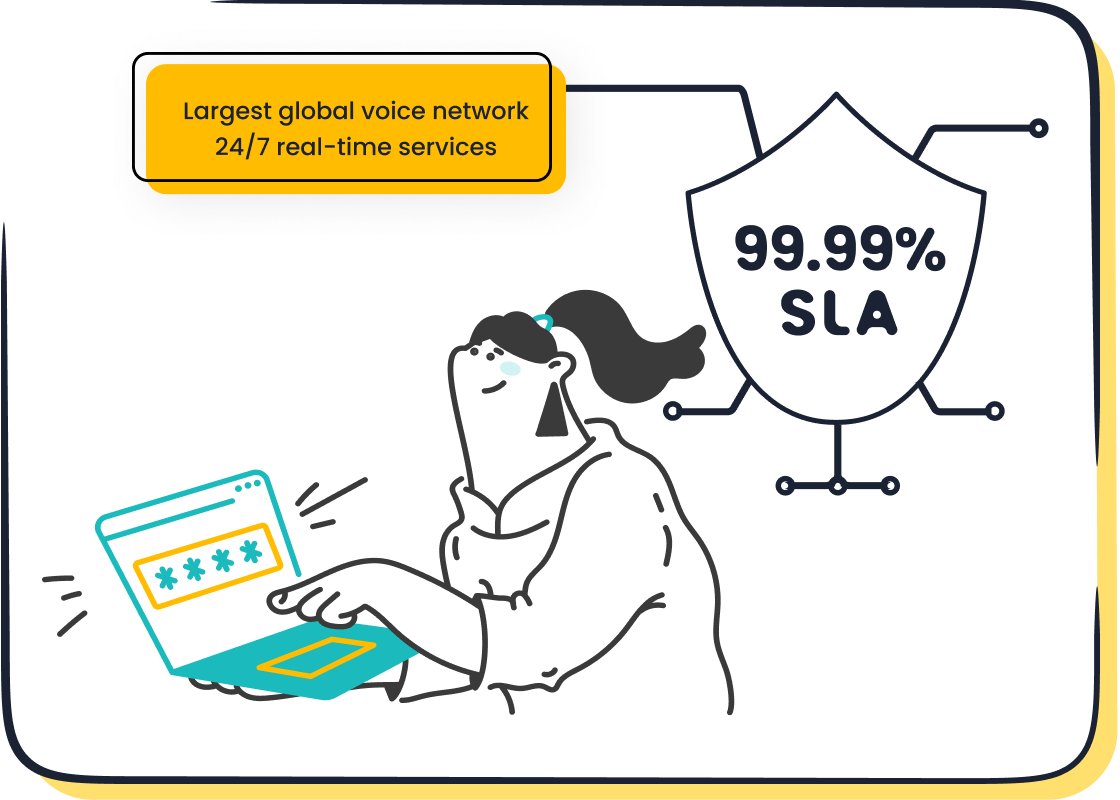
For small businesses, a virtual or hybrid setup often works best. Tools like Sobot’s Voice/Call Center make this easier by offering features like global number availability and AI-powered Voicebots. These tools help you manage calls efficiently, even with a small team.
Create a Budget-Friendly Business Plan
A solid business plan keeps your call center on budget. Start by listing your expenses. Include hardware, software, salaries, and communication tools. Then, assign costs to each item based on research or past receipts. Don’t forget to forecast for the next year. This helps you plan for growth or cost-saving measures.
Outsourcing some tasks can also save money. For instance, using Sobot’s cloud-based solutions eliminates the need for expensive on-site equipment. Plus, with a 99.99% system uptime, you’ll avoid costly downtime.
Tip: Planning ahead streamlines operations and reduces costs. It’s a win-win for your call center business.
Essential Tools and Technology for Starting a Small Call Center

Affordable Call Center Software Options (Including Sobot Voice/Call Center)
When you're starting a small call center, choosing the right software is crucial. It’s the backbone of your operations, helping you manage calls, track performance, and deliver excellent customer support. The good news? You don’t need to spend a fortune to get started. Here are some essential tools to consider:
- Softphones: These allow your team to make and receive calls using computers or mobile devices, cutting down on hardware costs.
- Interactive Voice Response (IVR): IVR systems greet callers and route them to the right department or agent.
- Automatic Call Distribution (ACD): ACD ensures calls are distributed efficiently, reducing wait times.
- Skill-based Call Routing: This matches customers with agents who have the expertise to solve their issues.
- Call Recording: Record calls for training and quality assurance purposes.

Sobot’s Voice/Call Center stands out as an affordable and feature-rich option. It offers tools like intelligent IVR, smart call routing, and a unified workspace for agents. Plus, with a 99.99% uptime and global number availability, you can ensure seamless operations. Whether you’re handling inbound or outbound calls, Sobot’s platform simplifies your call center setup while keeping costs low.
Tip: Compare pricing and features across vendors to find the best fit for your needs. Sobot’s SaaS rental model makes it an economical choice for small businesses.
Hardware Requirements for a Small Call Center
You don’t need a high-tech setup to get your small call center running. A few essential pieces of hardware will do the trick. Here’s what you’ll need:
- Computers: Basic desktops or laptops for your agents, starting at around $50 per unit.
- Headsets: Noise-canceling headsets ensure clear communication.
- Phones: If you’re not using softphones, invest in reliable desk phones.
- Network Infrastructure: Routers, firewalls, and a stable internet connection are non-negotiable. Setting up this infrastructure typically costs around $2,000.

Sobot’s cloud-based solutions reduce the need for expensive on-site equipment. For example, its Voice/Call Center integrates seamlessly with existing systems, so you won’t need to overhaul your current setup. This approach saves money and simplifies the process of setting up a call center.
Note: Invest in quality hardware upfront to avoid frequent replacements or repairs. It’s a cost-effective move in the long run.
Leveraging Automation and AI for Efficiency
Automation and AI are game-changers for small call centers. They help you save time, reduce costs, and improve service quality. Here’s how:
- AI-Powered Voicebots: These handle routine inquiries, freeing up agents to focus on complex issues.
- Call Routing Optimization: AI matches customers with the best agents based on their needs and the agent’s expertise.
- Workforce Management: Predict peak times and adjust staffing levels with AI-driven insights.
- Real-Time Monitoring: Identify areas for improvement and optimize performance on the go.
The benefits speak for themselves. According to McKinsey, automation can reduce handling time by up to 40%. Gartner reports that AI can handle up to 80% of routine inquiries, while Deloitte found a 30% improvement in service levels. These stats highlight why automation is a must-have for any small call center.
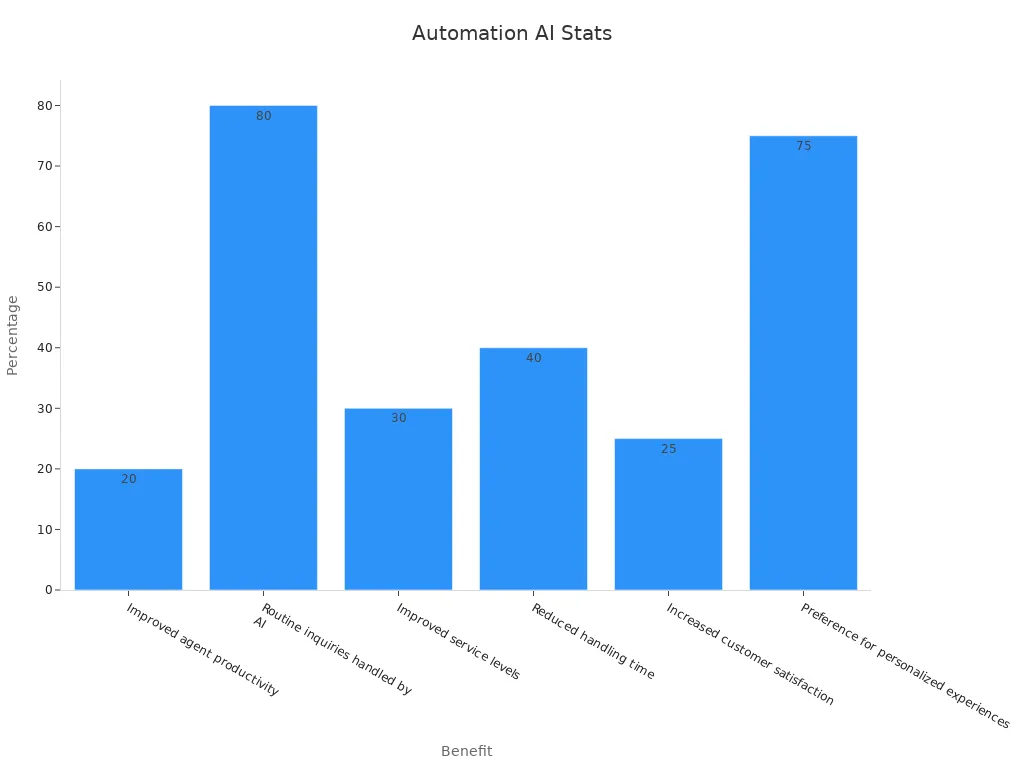
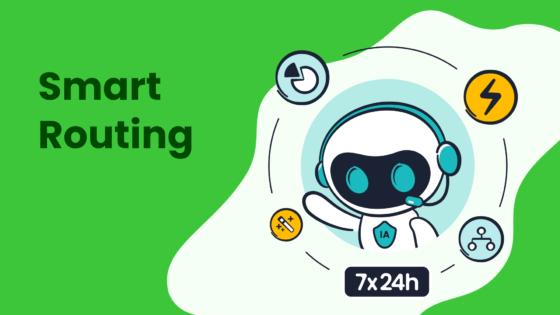
Sobot’s Voice/Call Center leverages AI to enhance efficiency. Its AI-powered Voicebot and smart call routing ensure customers get quick, personalized service. By integrating automation into your call center setup, you’ll not only save money but also deliver a better experience for your customers.
Did you know? Businesses using AI see a 25% increase in customer satisfaction, according to Customer Contact Week Digital.
Recruiting and Training for Your Call Center Team

Cost-Effective Recruitment Strategies
Recruiting for a small call center doesn’t have to drain your budget. By focusing on efficiency and effectiveness, you can attract the right talent without overspending. Start by leveraging free or low-cost job boards and social media platforms to post openings. Platforms like LinkedIn and Indeed allow you to reach a wide audience while keeping costs low.
To further optimize your recruitment process, track key metrics. For example:
| Metric | Description |
|---|---|
| Time to fill | Streamline hiring decisions to reduce the time it takes to fill a position. |
| Quality of source | Focus on channels that consistently deliver high-performing candidates. |
| Cost per hire | Evaluate total hiring costs to ensure you’re staying within budget. |
| Candidate job satisfaction | Ensure job descriptions align with reality to improve retention. |
Using these metrics helps you refine your strategy and make data-driven decisions. Sobot’s unified workspace can also assist by integrating candidate data, making it easier to manage the hiring process efficiently.
Training Programs for Call Center Agents
Effective training is the backbone of a successful small call center. It equips your agents with the skills they need to deliver excellent customer support. Start by identifying gaps in knowledge and skills. Then, design a training program that addresses these areas.
A phased approach works best. Begin with onboarding to familiarize agents with your tools, like Sobot’s Voice/Call Center, which simplifies call management. Follow up with role-playing exercises to build confidence in handling real-world scenarios. Finally, implement ongoing training to keep agents updated on industry trends and regulations.
Key outcomes of well-structured training include:
- Improved customer experience through better communication skills.
- Reduced turnover, as trained agents feel more confident and less stressed.
- Increased ROI, as skilled agents handle calls more efficiently.
Investing in call center training pays off by boosting both agent performance and customer satisfaction.
Retaining Talent While Managing Costs
Retention is critical for any call center business. High turnover rates can disrupt operations and increase costs. To keep your team happy and engaged, focus on creating a supportive work environment. Offer flexible schedules, especially if you’re running a virtual call center. Recognize achievements to boost morale and foster loyalty.

Data shows that 89% of satisfied employees are likely to stay, compared to just 22% of dissatisfied ones. Stress is a major factor in turnover, so streamline workflows to reduce unnecessary pressure. Tools like Sobot’s AI-powered Voicebot can handle repetitive tasks, allowing agents to focus on meaningful interactions. This not only improves job satisfaction but also enhances overall efficiency.
By combining effective training, supportive policies, and smart technology, you can retain top talent while keeping costs under control.
Setting Up Operations for Your Call Center
Establishing Workflows and Processes
Creating efficient workflows is the backbone of a successful small call center. Start by mapping out the customer journey. Identify key touchpoints, from the moment a customer calls to the resolution of their issue. This clarity helps you design processes that minimize delays and improve satisfaction.
Automation plays a big role here. By automating repetitive tasks, like call logging or follow-ups, you free up your agents to focus on more complex customer support needs. For example, Sobot’s Voice/Call Center offers features like smart call routing and AI-powered Voicebots. These tools ensure customers are connected to the right agent quickly, enhancing their experience.
Tracking performance is equally important. Keep an eye on metrics like average handle time (AHT) and customer satisfaction. Continuous monitoring helps you identify bottlenecks and optimize workflows. A well-documented strategy not only improves efficiency but also keeps your team engaged and reduces turnover.
Ensuring Compliance with Industry Standards
Compliance isn’t just about avoiding penalties—it’s about building trust with your customers. Regulations like GDPR, CCPA, and TCPA set strict guidelines for data protection and communication practices. Non-compliance can lead to hefty fines, as shown below:
| Compliance Regulation | Potential Penalty |
|---|---|
| GDPR (EU) | Up to €20 million or 4% of global turnover |
| CCPA/CPRA (California) | $2,500–$7,500 per violation |
| TCPA (USA) | $500–$1,500 per unauthorized call or text |
| HIPAA (USA) | Up to $1.5 million/year for healthcare data breaches |
Beyond fines, compliance failures can damage your reputation. Over 80% of consumers say data protection influences their purchasing decisions. To stay compliant, use tools like Sobot’s platform, which ensures encrypted data transfer and secure dialing. These features help you meet industry standards while maintaining customer trust.
Managing Resources Efficiently with Sobot's Unified Workspace
Efficient resource management is key to running a cost-effective small call center. Sobot’s Unified Workspace simplifies this by consolidating all your tools and customer data into one platform. Agents can access call logs, customer histories, and real-time analytics without switching between systems. This saves time and reduces errors.
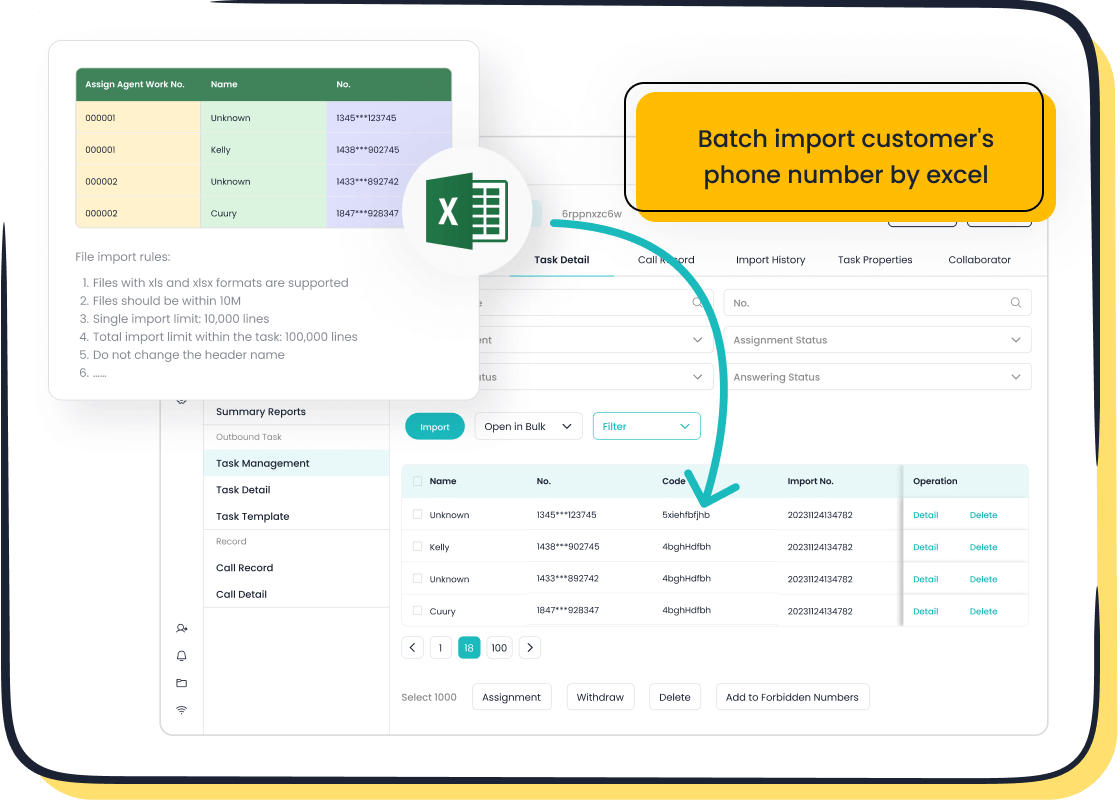
High call volumes can overwhelm small teams. Strategic workforce management, supported by Sobot’s analytics tools, helps you predict peak times and allocate resources effectively. Automation features, like bulk outbound tasks, further streamline operations. By leveraging these tools, you can handle more calls without increasing costs.
Efficient resource management isn’t just about saving money—it’s about delivering better service. When your team has the right tools and processes, they can focus on what matters most: your customers.
Marketing and Client Acquisition for Your Small Call Center
Budget-Friendly Marketing Strategies
Marketing doesn’t have to cost a fortune, especially when you’re running a small call center. Start by focusing on strategies that deliver high returns without breaking the bank. Social media platforms like Facebook and LinkedIn are great for reaching potential clients. Posting engaging content or running targeted ads can help you connect with businesses that need your services.
Email marketing is another cost-effective option. Create a list of prospects and send personalized emails showcasing your call center’s strengths. Highlight features like Sobot’s AI-powered Voicebot or global number availability to stand out.
To measure success, track key metrics like Customer Acquisition Cost (CAC) and Conversion Rate. Here’s a quick look at how these metrics can guide your efforts:
| Key Performance Indicator | Description | Impact |
|---|---|---|
| Customer Acquisition Cost (CAC) | Total marketing and sales expenses divided by new customers acquired | Lower CAC indicates more efficient spending on marketing |
| Conversion Rate | Percentage of leads that take desired actions | Higher conversion rates show effective marketing strategies |
| Customer Lifetime Value (CLV) | Total expected revenue from a single customer relationship | Higher CLV suggests successful long-term customer engagement |
By focusing on these metrics, you’ll ensure your marketing dollars are well spent.
Building an Online Presence to Attract Clients
Your online presence is often the first impression potential clients have of your small call center. A professional website is essential. Make sure it’s easy to navigate, loads quickly, and highlights your services. Include testimonials or case studies, like how Samsung achieved a 97% customer satisfaction rate using Sobot’s solutions.
Social media is equally important. Platforms like Instagram and Twitter allow you to engage directly with your audience. Track metrics like engagement rate and social referrals to see what’s working. For example:
| Metric | Description |
|---|---|
| Engagement Rate | Percentage of sessions that were engaged, indicating user interaction with the website. |
| Social Referrals | Tracks referral traffic from social media, indicating the effectiveness of social media strategies. |
| New Visitor Sessions | Measures unique new users visiting the site, providing insights into brand growth and audience reach. |
By analyzing these metrics, you can refine your strategy and attract more clients.
Networking and Partnerships for Small Business Growth
Networking is a powerful tool for growing your small call center. Attend industry events, join local business groups, or participate in online forums. Building relationships with other businesses can lead to valuable partnerships. For instance, collaborating with a medtech company to provide customer support can open doors to new opportunities.
Here’s how partnerships have helped other businesses:
| Company Type | Service Provided | Outcome Description |
|---|---|---|
| Indian Medtech Company | Customer support agents | Managed increased chat volume effectively during the pandemic. |
| Charlotte-based Solar Panel Business | Appointment setting services | Secured appointments with warm leads, delivering high-quality results. |
| US-based Luxury Goods Company | Customer support for aged customers | Provided reliable support for smartwatch-related issues. |
These examples show how partnerships can drive growth and improve service quality. By leveraging tools like Sobot’s Unified Workspace, you can manage these collaborations efficiently and deliver exceptional results.
Maintaining and Scaling Your Call Center
Monitoring Performance Metrics with Sobot's Analytics Tools
Tracking performance metrics is essential for maintaining and scaling your call center. It helps you identify what’s working and where you need to improve. Metrics like Customer Satisfaction (CSAT), Adherence to Schedule, and Average Handle Time (AHT) are particularly important. Here’s how they benefit your operations:
| KPI | Benefit |
|---|---|
| Customer Satisfaction (CSAT) | Provides insights into team performance and areas for improvement, enhancing customer experience. |
| Adherence to Schedule | Helps identify top performers and those needing additional training, optimizing agent performance. |
| Average Handle Time | Pinpoints inefficiencies, allowing for operational cost reduction and process optimization. |
By focusing on these metrics, you can improve customer satisfaction, optimize agent performance, and reduce costs. Sobot’s analytics tools make this process seamless. For example, they provide real-time insights into response rates, accuracy, and workload. Businesses using Sobot have reported a 15% to 35% improvement in response rates and an 80% reduction in knowledge base maintenance workload. These tools empower you to make data-driven decisions, ensuring your small call center operates efficiently.
Tip: Regularly review your metrics to spot trends and adjust your strategies. This proactive approach keeps your call center running smoothly.
Improving Efficiency Through Feedback and Optimization
Feedback is a goldmine for improving efficiency in your call center. By analyzing call recordings and customer interactions, you can uncover pain points and implement targeted solutions. For instance, trends in call volume can help you optimize staffing schedules, while speech analytics can identify coaching opportunities for agents.
Here are some ways feedback drives efficiency:
- Call data reveals areas for improvement, enhancing overall performance.
- Analyzing recordings helps you address customer pain points effectively.
- Understanding peak call times allows better resource allocation.
- Empowering agents through feedback loops boosts job satisfaction and service quality.
Sobot’s platform simplifies this process with AI-powered analytics. It automates the identification of coaching opportunities and provides actionable insights. For example, businesses using Sobot have optimized their schedules and improved resource use by analyzing trends in call volume. This approach not only enhances efficiency but also creates a better experience for your customers.
Did you know? Empowered employees are more likely to deliver exceptional customer support, leading to higher satisfaction rates.
Scaling Operations Sustainably with Sobot's Global Network Support
Scaling your call center doesn’t have to be overwhelming. With the right tools and strategies, you can grow sustainably while maintaining high service standards. Sobot’s global network support is designed to help small call centers scale efficiently. Its 99.99% system uptime ensures reliability, while features like AI-driven solutions reduce waiting times by 35%.
Here’s how Sobot supports sustainable growth:
- 70% of its contact center business comes from system upgrades, showing its focus on modernized solutions.
- Omnichannel capabilities minimize system disjointedness, improving the customer experience.
- AI-powered tools streamline operations, allowing you to handle higher call volumes without increasing costs.
For example, if your small call center starts receiving more calls than usual, Sobot’s smart call routing and bulk outbound task features can help you manage the load effectively. These tools ensure your team stays productive, even during peak times. By leveraging Sobot’s solutions, you can scale your operations without compromising on quality or efficiency.
Pro Tip: Plan for growth by investing in scalable tools like Sobot’s Voice/Call Center. It’s a cost-effective way to expand your capabilities while keeping your budget in check.
Starting a small call center on a budget doesn’t have to be complicated. By defining clear goals, choosing the right tools, and leveraging affordable solutions like Sobot’s Voice/Call Center, you can create a cost-effective operation that delivers exceptional customer service. Tools like AI-powered Voicebots and smart call routing not only save time but also improve customer satisfaction. For example, businesses using Sobot have reported up to a 30% increase in efficiency.
Ready to take the next step? Explore Sobot’s offerings today and see how they can transform your call center into a success story. 🚀
FAQ
What is the best way to start a call center on a budget?
Focus on affordable tools and technology. Use cloud-based solutions like Sobot’s Voice/Call Center to avoid expensive hardware. Start small with essential features like IVR and call routing. Gradually scale as your business grows.
Tip: Sobot’s SaaS rental model keeps costs low while offering advanced features.
How can automation help my small call center?
Automation saves time and money. AI-powered Voicebots handle routine calls, freeing agents for complex tasks. Tools like Sobot’s smart call routing optimize workflows. Businesses using automation report up to a 40% reduction in handling time (source).
Do I need a physical office for my call center?
Not necessarily. Virtual call centers work well for small businesses. They reduce overhead costs and offer flexibility. Sobot’s cloud-based solutions support remote teams with features like global number availability and encrypted data transfer.
How can I measure my call center’s performance?
Track metrics like Average Handle Time (AHT), Customer Satisfaction (CSAT), and Cost Per Call. Sobot’s analytics tools provide real-time insights, helping you optimize operations. For example, businesses using Sobot report a 15% improvement in response rates.
Is Sobot suitable for small businesses?
Absolutely! Sobot’s Voice/Call Center offers affordable, scalable solutions tailored for small businesses. Features like AI-powered Voicebots, smart call routing, and unified workspaces simplify operations. With a 99.99% uptime, you’ll ensure reliable service without breaking the bank.
Did you know? Sobot serves over 10,000 brands globally, including Samsung and Michael Kors.
See Also
Best 10 VoIP Solutions for Small Business Needs
Comprehensive Guide to Multichannel Call Center Solutions
Best No-Cost Call Center CRM Tools for 2024
Enhancing Call Center Efficiency Through Effective Monitoring
